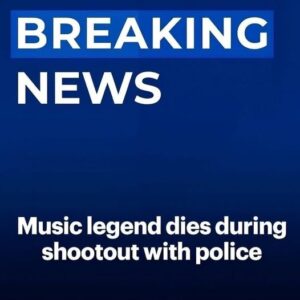When confronted with confusing or appalling new events—and the last few years have surely had plenty of them—the instinct of historians like myself is to look for historical parallels. Finding a good historical parallel can be alarming or consoling, but whatever the nature of the parallel, there is comfort in knowing that there is a parallel. With a good historical parallel in mind, we can get a sense of the range of possible outcomes, then investigate and assess the cures or exit strategies that leaders in the past have employed. That is what the ancients meant when they said that history was the teacher of practical wisdom. More of that in a moment.
The present period of American history reminds me of nothing so much as the middle of the fourteenth century in Europe. This is not a consoling parallel. That period was marked by a general loss of faith in the great universal institutions of the medieval period—the papacy and the Holy Roman Empire; by the rise of a new and formidable external enemy—the Ottoman Turks; by the failure of Europe’s collective security arrangement in the Crusader states with the fall of the last Crusader base at Acre in 1291; by a “forever war” known as the Hundred Years War, the longest war in history; by the first great international banking failure in 1343, when King Edward III of England couldn’t pay his Italian creditors; by the inability of states to protect themselves from violent predators—the “great companies” of unemployed soldiers who ravaged Italian city-states in the period; and most of all by the greatest pandemic in history, the Black Death. Admittedly, to compare the latter, which wiped out a third of the population of Europe, to the Covid pandemic, which caused an incremental increase in mortality of, at most, .5%—that’s point 5%—is like comparing an elephant to a gnat. Nevertheless, the responses of the public health authorities in both periods, 1348-50 and in 2020-2022, produced outcomes of negative utility which severely damaged their credibility.
I hope that you, dear reader, are already consoled: things are not as bad as the fourteenth century—yet. But there is another side to this parallel which can offer us guidance, and that is the response of educators to the crisis of the fourteenth century, in particular the man who was probably the greatest educator of the West since Socrates: the scholar-poet Francesco Petrarch. Petrarch, trying to explain how Europe had gotten itself into such an appalling state, blamed the educational institutions that had grown up in the previous two centuries: the universities. Whatever the ideals that had once animated them, by Petrarch’s time, in Italy, almost all the men universities were graduating were lawyers and medical doctors. The education of lawyers (in Petrarch’s somewhat overheated view) had turned them into predators who sowed social discord in order to profit from it. The education of medical doctors produced frauds and religious doubters.
If Europe was to recover from its ills, Petrarch believed, it would need a new kind of education. New, yet old: Petrarch’s new kind of education would look back to the great men and women of antiquity, to the successful societies of Greece and Rome. It would revive the ancient form of education in virtue and eloquence that (he believed) had produced them. That was the way to bring about a renaissance of ancient moral greatness and a reformation of religion. And that, to a surprising extent, is what happened.
I thought of this history while reading Paul Carrese’s essay on the institutes of “civic thought and leadership” (CTL) currently being founded in public and some private universities across the country—and inspired in part by his own leadership, to give credit where credit is due. I wondered what we might learn from the renaissance and reformation started by Petrarch’s humanist literati, which suffered some serious failures as well as successes. Carrese described the worries about current universities that have given rise to the new programs: the assault on free speech; the hostility to the Western and American past; the politicization of curricula; and above all, the revelation after 10/7 of the deep moral confusion among some of academe’s most prominent leaders about the telos of the university and its role in civil society. When a significant proportion of American students side, automatically and shamelessly, with Islamist terrorists against Judeo-Christian polities and Western civilization, something is dreadfully wrong.
To preserve the long-term health of these programs within the university, the new institutes must justify their existence in terms that colleagues in the wider university can understand and accept.
The new institutions for civic education being founded around the country are just beginning, and there are still many unresolved issues about how they should be run and what they should teach. I have a few comments to make about both.
The most important question about how they should be run is determining how they should interact with the university world into which they are being injected. Should they think of themselves as parachutists being dropped behind enemy lines, or should they try to integrate themselves into progressive institutions and form partnerships with existing departments and educational bureaucracies? Should they share faculty with departments, try to co-opt existing faculty sympathetic to their reforming agenda, or should they build their own faculties?
Hard experience has taught reformers that civic institutes, to avoid being crippled or corrupted by the progressive university’s sticks and carrots, must have (1) control of faculty appointments, (2) control of curricula, and (3) independent sources of funding. A degree of separation from the larger institution is also necessary to build esprit de corps and maintain traditional ways of thought. The experience of the great-granddaddy of these new centers, the James Madison Program in American Ideals and Institutions, has illustrated these evident truths.
I agree about these fundamental premises, but I also think that, to preserve the long-term health of these programs within the university, the new institutes must justify their existence in terms that colleagues in the wider university can understand and accept. They must supplement, not duplicate, what the university already does, and they must offer the university measurable benefits. Both will be necessary conditions to protect them when they come under fire from their critics, as they will and already have. No matter how well funded, the new institutes will make demands on the university’s common resources, and opposition to them will get traction if existing faculty and other institutional stakeholders feel that the new institutes are threatening their own well-being. So a new institution must have prestigious faculty, and it must have positive effects on the school’s record of selectivity and recruitment of students. It must produce quality research and it must teach popular courses.
This brings us to the subject of what the new CTL programs will teach. The most obvious justification for the new institutes is that they will offer needed programs in leadership and citizenship. “Leadership studies” is already a huge industry at universities and has been for half a century, but those who teach this subject tend to be scattered among many departments, including political science, history, psychology, sociology, business, and education. A civics institute can justly claim to be providing special focus for existing, scattered offerings. Of course much that is currently taught under the rubric of leadership studies is a jumble of vacuous slogans and fashionable theories, “interdisciplinary” (a magic word to university administrators) to the point of incoherence. But the subject can be taught in a serious way. Democratic leadership and military leadership are two varieties of leadership studies that would be the most germane and the most susceptible of serious historical study, using the solid empirical methods that have been developed by Niall Ferguson and others in applied history.
I mention history, not only because it is my own field, but because it provides an excellent example of how the abandonment of traditional educational goals provides a huge opportunity for educational reformers. Historians from the time of Thucydides to the eighteenth century believed that the study of history taught practical wisdom—Aristotle’s phronesis—and moderation. Learning about the number of ways that utopian projects have gone wrong, for example, is an effective prophylactic against fanaticism. Liberal and progressive historians since Hegel, sadly, have rejected these moral goals, and especially the idea that later generations should model themselves on inspiring leaders and wise regimes of the past, such as the one founded by the American Founders. The ideal society, after all, for progressives lies in the future, not the past. From the 1990s forward, there has also been an understandable imperative in American history departments to hire female historians, who for a long time were under-represented in the subfields of political, military, diplomatic, legal, and intellectual history. Hence, these more traditional subjects have been neglected in contemporary academic history.
All this means that whole fields of history which progressive departments have little interest in cultivating lie open for an enterprising civics program. There is still currently a population of outstanding young PhDs in those fields that are unhireable in progressive departments because their specialties are unpopular with the professoriate or because they have low intersectional scores. The Hamilton Center at the University of Florida—the most successful so far of the new civics institutes—has built an extraordinary faculty in a very short time by taking advantage of the faddish preoccupations of progressive history departments. (Full disclosure: I am on the academic advisory board of the Center.)
Courses in political history and biography, military history, legal history, and intellectual history also happen to be immensely popular with undergraduates. It is no secret that the number of history majors in U.S. universities has been in decline for well over a decade. My colleagues are mystified as to why this is happening, looking everywhere for an explanation except in the mirror.
The recent developments in my own Department of History at Harvard are, I believe, fairly typical, at least for departments that train graduate students and include themselves in the club of soi-disant elite universities. I remember, when I was the Director of Undergraduate Studies in the Harvard History Department for eight years during the 1990s, I used to plead with my colleagues, to no avail, to offer more political and military history. Surveys we conducted showed that we could increase our enrollments—already in decline then—by half again if we offered just a few courses in American military history. We had for decades a popular course in American diplomatic history taught by two distinguished experts: Ernest May for the Atlantic world and Akira Iriye for the Pacific. This was popular among undergraduates who envisaged a career in the State Department and other careers requiring a knowledge of international relations. Diplomatic history was replaced by “international history” in the 2000s which caters to students who plan to work for NGOs. We have not supported legal history for a long time, but when undergraduate Core courses were offered by professors in the law school, they were mobbed by pre-laws. We lost a quarter of our concentrators (majors) after Alan Brinkley was denied tenure; he regularly enrolled many hundreds of students in his popular courses on American history. Brinkley went on to have an immensely distinguished career at Columbia. The grounds for not promoting him at Harvard (as was widely reported at the time) was his “biographical approach” to history. God forbid we should teach something that interests undergraduates! Our department today enrolls less than half the number of concentrators we were enrolling in the 1990s, and a course that enrolls 50 students is considered wildly successful.
If a CTL program taught a few courses like this, it wouldn’t have to worry about enrollments. Departments and programs with large enrollments always command institutional power within universities. And the political, diplomatic, constitutional, and intellectual history of America and the West are precisely the subjects that students most need to learn if they are to be effective leaders and responsible citizens in their adult lives.





